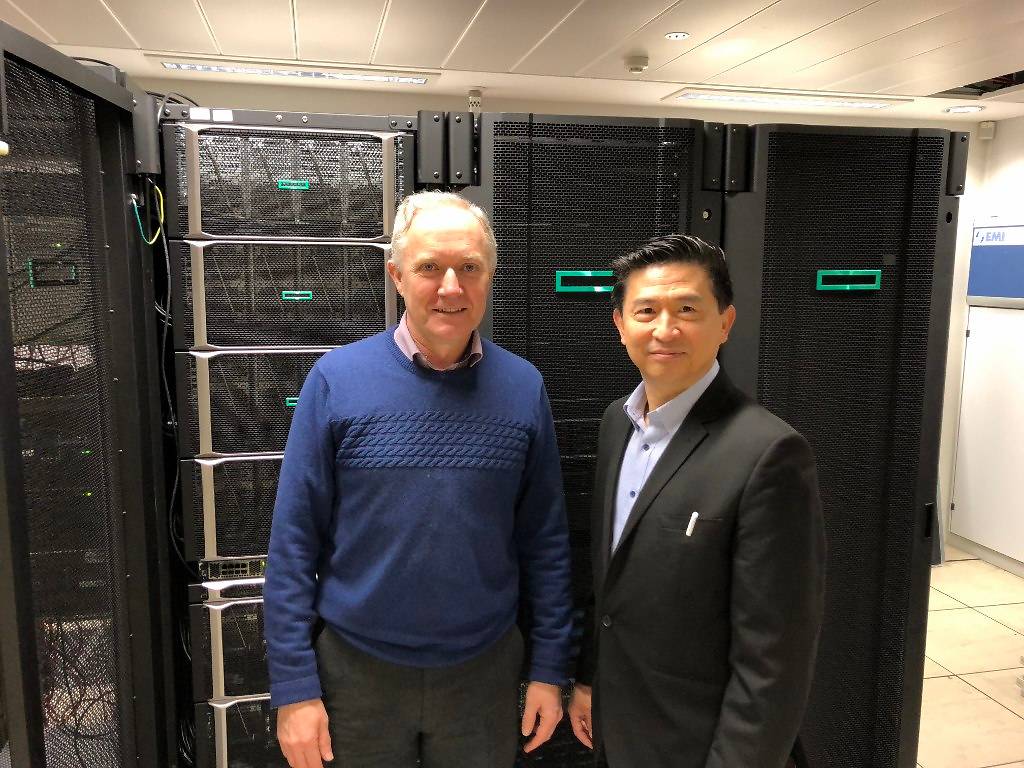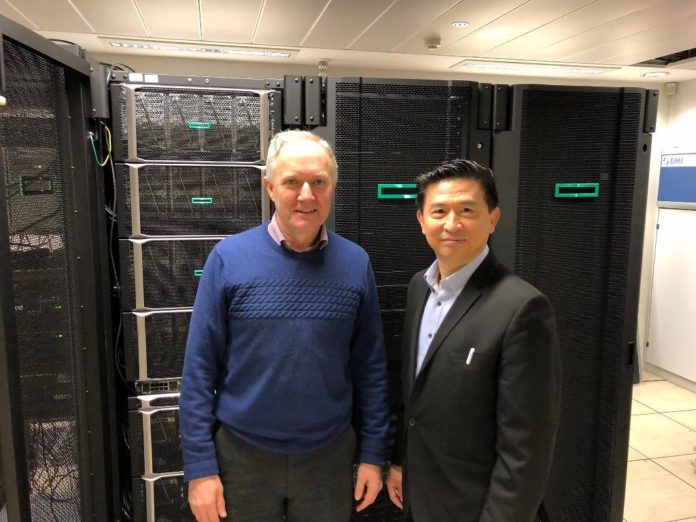SINGAPORE: It has been a hectic couple of weeks for Dr Goh Eng Lim, who made waves last August as the man behind the most powerful supercomputer sent into space.
The vice president and CTO of High Performance Computing and Artificial Intelligence (AI) at Hewlett Packard Enterprise (HPE) was honoured with the Singapore Visionary Award by the National Supercomputing Centre (NSCC) Singapore on Mar 27.
This accolade came on the heels of his appointment to the National Research Foundation’s Scientific Advisory Board last December – making him the first Singaporean to achieve this.
He joins other notable names like Cavendish Professor of Physics at University of Cambridge Sir Richard Friend, who is chairman of the board, and Professor Anthony Finkelstein, UK’s chief scientific adviser for national security, in the 12-member board.
The advisory board is tasked with highlighting critical issues and emerging global trends where Singapore could fill a gap or meet a need. It will also identify, together with the NRF, new areas of research where Singapore can reap the benefits of cutting-edge science and build the foundation for enterprise and industry growth, according to the website.
HAWKING: GREAT MIND, GREATER JOKER?
Dr Goh was then in the UK at the end of March where he attended the private funeral of Professor Stephen Hawking, the great physicist and cosmologist of our age.
In fact, when he spoke to Channel NewsAsia on Friday (Apr 6) during a wide-ranging interview, the 58-year-old had just returned to Singapore the day before.
The HPE executive, who previously shared with this reporter that he was invited by Prof Hawking to introduce Nobel Laureate in Physics Saul Perlmutter at his 70th birthday symposium in 2012, shed more light on his interactions with the famed physicist.
“Three months after the speech, I was walking down the hallway with Professor Paul Shellard (Director of Centre for Theoretical Cosmology at University of Cambridge) when we noticed Prof Hawking’s room was left opened,” Dr Goh recounted.
“So I popped my head in and asked him what he thought about my speech and whether it did him justice. His reply? ‘No.’ I was so disappointed. It was one of the lowest points for me personally,” he added.

Dr Goh standing in front of the COSMOS supercomputer HPE developed for the late Professor Stephen Hawking and his associates. He is seen here with Professor Paul Shellard. (Photo: Dr Goh Eng Lim)
That wasn’t the end of this particular story, though.
Dr Goh shared that he took a walk through King’s College with Prof Shellard last Tuesday after the funeral, and as they stopped in front of Prof Hawking’s home, he brought up the abovementioned incident.
He said: “Prof Shellard just patted my shoulder and pointed out to me that Stephen Hawking is a practical joker, and he could have just been pulling my leg.
“I’ll like to think so!” said the three-decade veteran in high-performance computing in jest yet also in earnest – his humility seen in the light of the reverence of a larger-than-life personality that is Stephen Hawking.
SINGAPORE’S HAZY FUTURE
As his mind segues from one topic to another, Dr Goh also revealed what he hoped to bring to the table when the NRF’s Scientific Advisory Board next meets in June, based on the works he is currently working on.
“I was reading the other day about Prime Minister Lee Hsien Loong’s call to reimagine Singapore, and that stuck with me,” he said. “To me, Smart Nation is just the first step of that reimagination.”
This led to him thinking what was the one thing that if it was not solved, will be a thorn for Singapore 50 years down the road. His conclusion: Haze.
File photo of office workers in masks at the Central Business District of Singapore. (Photo: Calvin Oh)
“Assuming that we’ve solved all the other big problems like health or food, and the country’s prosperous,” Dr Goh illustrated. “But then the haze comes, and all the Government can tell you is: ‘The haze is here, please stay at home.’
“This will probably not sit well with citizens’ expectations, who might very well ask: ‘How come you still can’t do anything about this?’”
This, in turn, led him to thinking if Singapore can be shaped aerodynamically, or translating that into a problem statement: “What shape should Singapore be in order to reduce haze by 10 per cent, or 20, or 30?”
The HPE executive shared that he has chatted with NSCC chief Tan Tin Wee about these ideas and pointed out that some of the building blocks are already present.
For instance, the NSCC is home to ASPIRE 1, also known as the Advanced Supercomputer for Petascale Innovation Research and Enterprise.
This large amount of computing power, together with the mapping data from initiatives like Virtual Singapore which is a three-dimensional modelling platform of the country, will allow urban planners in the reimagination process.
For instance, they can look at conditions as granular as air flow on a specific street or the types of trees to plant to help disperse haze better, Dr Goh explained.
He was, however, keen to point out these are just his initial ideas. As a newcomer, he is not coming to the board, and by extension the Government, to tell people what they should be doing.
“My wife often reminds me that I’m the most knowledgeable person she knows, but knowledge is not wisdom,” Dr Goh stressed.
“I just hope to offer my knowledge and … (through others and mine) help the Singapore Government gain the wisdom needed to bring the country into the future.”





